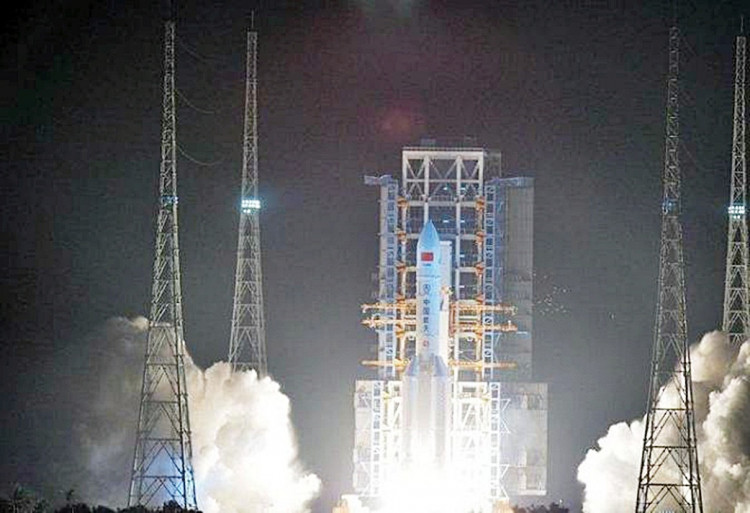China is preparing to send three taikonauts, or China astronauts, into low Earth orbit. The Shenzhou 12 mission is China's first crewed mission to the Tiangong space station.
The spacecraft and rocket for the launch arrived at the Jiuquan Satellite Launch Center in mid-April, according to the China Manned Space Engineering Office.
There has been no formal announcement of a launch date for Shenzhou 12. However, a Long March 2F rocket is expected to bring the three to a rendezvous and docking with the Tianhe module later this month. It was rumored that it would take place June 10, but it now appears that it will take place June 17.
It is unknown how long the expedition will run. The taikonauts could spend months in orbit testing systems and prepping for the following modules and Tianzhou spacecraft. In total, China intends to deploy 11 missions in 2021 and 2022 to complete the space station complex. Three of the 11 flights will launch modules, four will deliver cargo, and four will carry a crew.
The station is designed to house three taikonauts for three months at a time. It will, however, have a crew of six during mission changeovers. Tiangong is expected to be around one-fifth the size of the U.S.'s International Space Station.
While no women are set to participate in the Shenzhou 12 mission, they are expected to join on every subsequent mission, according to Global Times.
Two women, Liu Yang and Wang Yaping, were chosen in 2011 as part of China's second cohort, following the initial batch of 14 men in the mid-1990s. In 2012, Liu became China's first woman in space, while Wang was the youngest, at 33 years old, in 2013.
The Chinese space station will be in orbit for at least 10 years. The Xuntian optical module, a Hubble-class space telescope, will join it in orbit. The space telescope will have a 2-meter aperture, similar to Hubble, but with a 300 fold larger field of vision.
This field of view will allow Xuntian to survey 40% of the sky across a decade using its 2.5-billion-pixel camera.






